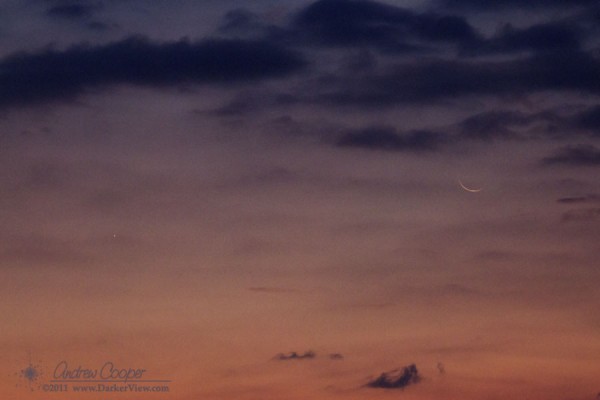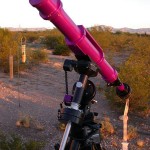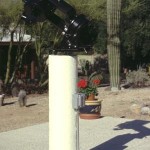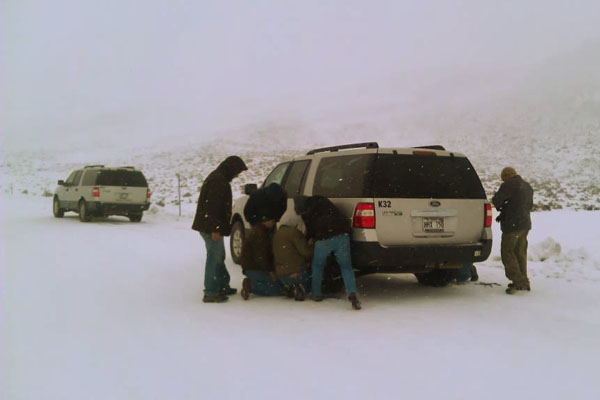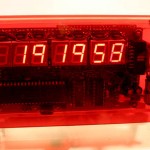
Mechanically the scope had a few problems. The truss tubes were attached with separate hardware top and bottom, so that setup required over 20 minutes of sorting through screws and futzing with eight separate truss tubes waving around the whole time.
The elevation bearings had been set about 1/8th inch off from each other leading to a side to side twist when the scope was moved in elevation. This was not a major problem when using the scope visually but would make the use of digital setting circles impossible as DSC’s require orthogonal axis in the scope.
The ground board was a bit undersized, making the scope prone to tipping when used at low elevation.
The rebuilt scope is essentially finished with the usual tweaking and small adjustments remaining. Things are coming out very well and a few of the changes are worth passing along to the ATM community. In the sections below I will concentrate on practical details in hope of conveying some of the finer points in telescope making.
Continue reading “Rebuilding a 12.5″ f/5 Truss Tube Dobsonian”

